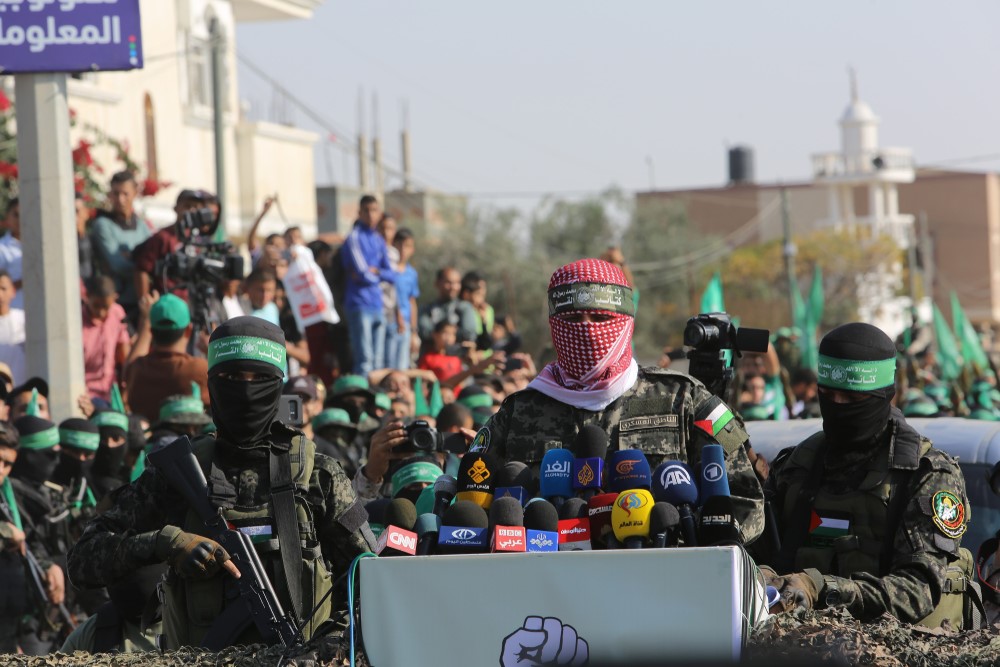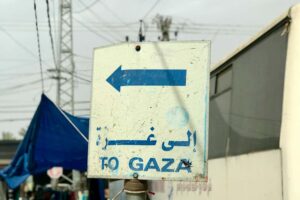
Ahead of the Gaza war, Hamas adopted a multi-faceted strategy aimed at ensuring its survival in a prolonged conflict with Israel. This approach relied on several key tactics to complicate IDF efforts to wipe out the entire Hamas terror army.
Central to this approach was the widespread dispersal of forces and assets across Gaza, embedding them deeply within the civilian population. This tactic not only complicated IDF operations but also leveraged the civilian landscape as a buffer against full-scale military assaults.
By situating its strategic assets and terror operatives within densely populated areas, Hamas increased the difficulty and potential human cost of any IDF efforts to dismantle its operations.
Another critical element of Hamas’ strategy was the construction of an extensive underground network throughout Gaza. This massive tunnel system served multiple purposes: Providing secure movement routes, storing weapons and supplies, protecting leaders and fighters from airstrikes, and facilitating surprise attacks against IDF forces.
Moreover, the vast tunnel infrastructure required deeper, more intricate maneuvers by the IDF, further complicating military operations and prolonging conflict.
Hamas Goes Into Hiding
In anticipation of major conflict after October 7, top Hamas leaders and many terror operatives went into hiding. This move was designed to limit direct clashes with the IDF, thereby preserving the core leadership and ensuring the survival of a large Hamas force even after incurring heavy battlefield losses.
Overall, the combination of wide dispersal and withdrawal into hideouts minimized the risk of total annihilation in Israeli offensives, allowing Hamas to maintain at least some operational capabilities.
The overarching strategy of Hamas was ultimately premised on outlasting the IDF. By ensuring the survival of key personnel and infrastructure, Hamas aimed to endure the immediate conflict and later rebuild its strength over time.
This endurance strategy relied on the ability to withstand Israel’s military campaign and emerge with at least some resources and leadership intact to continue terror operations in the future.
Limits of IDF Assault
To fully destroy Hamas under these conditions, Israel had to undertake an extended, systematic and brutal military campaign across Gaza. This would involve taking over the entire Gaza Strip, methodically rooting out the Hamas terror army, and dismantling the tunnel network.
Such operation, if carried out in full force, would necessitate heavy fighting and the bombardment of urban areas, resulting in significant casualties and destruction.
The IDF partly did this, launching a relatively lengthy war, employing large forces and heavy firepower, taking over and knocking out significant Hamas hubs.
However, achieving the complete destruction of Hamas required an even more devastating and/or prolonged campaign than the IDF assault so far. This approach would further stretch Israel’s military resources, while facing a hostile global climate and rapidly declining support from allies.
Moreover, Israel’s political and military leadership failed to design a fully effective war strategy. For instance, launching a gradual assault on Hamas strongholds, rather than attacking key terror hubs in parallel, limited the impact of Israel’s military action by allowing Hamas leaders and fighters to flee.
Hamas Will Survive: What’s Next?
Israel’s strategic decisions were influenced by initial fears of high casualties and international pressure to minimize civilian harm. PM Netanyahu’s domestic political considerations were also a factor. All of this enabled Hamas to draw out the conflict while keeping thousands of terrorists in safe areas away from combat zones.
However, Hamas leaders likely underestimated the force of Israel’s response. Their errors of judgement left much of the Gaza terror base in ruins. But despite suffering massive blows, losing a high percentage of its forces and military assets, it appears that Hamas will not be entirely eradicated in this round.
Notably, the IDF dominated the battle, demolishing key parts of the Hamas terror army and substantially degrading Hamas and Islamic Jihad’s operational capacity. Nonetheless, Hamas is likely to survive and attempt to rebuild its forces.
For Israel, the key to long-term success will be a sustained effort to disrupt Hamas rebuilding activities, continuously eroding its strength. Moving forward, the IDF will aim to minimize the Gaza threat by consistently monitoring and striking reemerging terror hubs, to fully eliminate Hamas as a significant player in the longer run.


